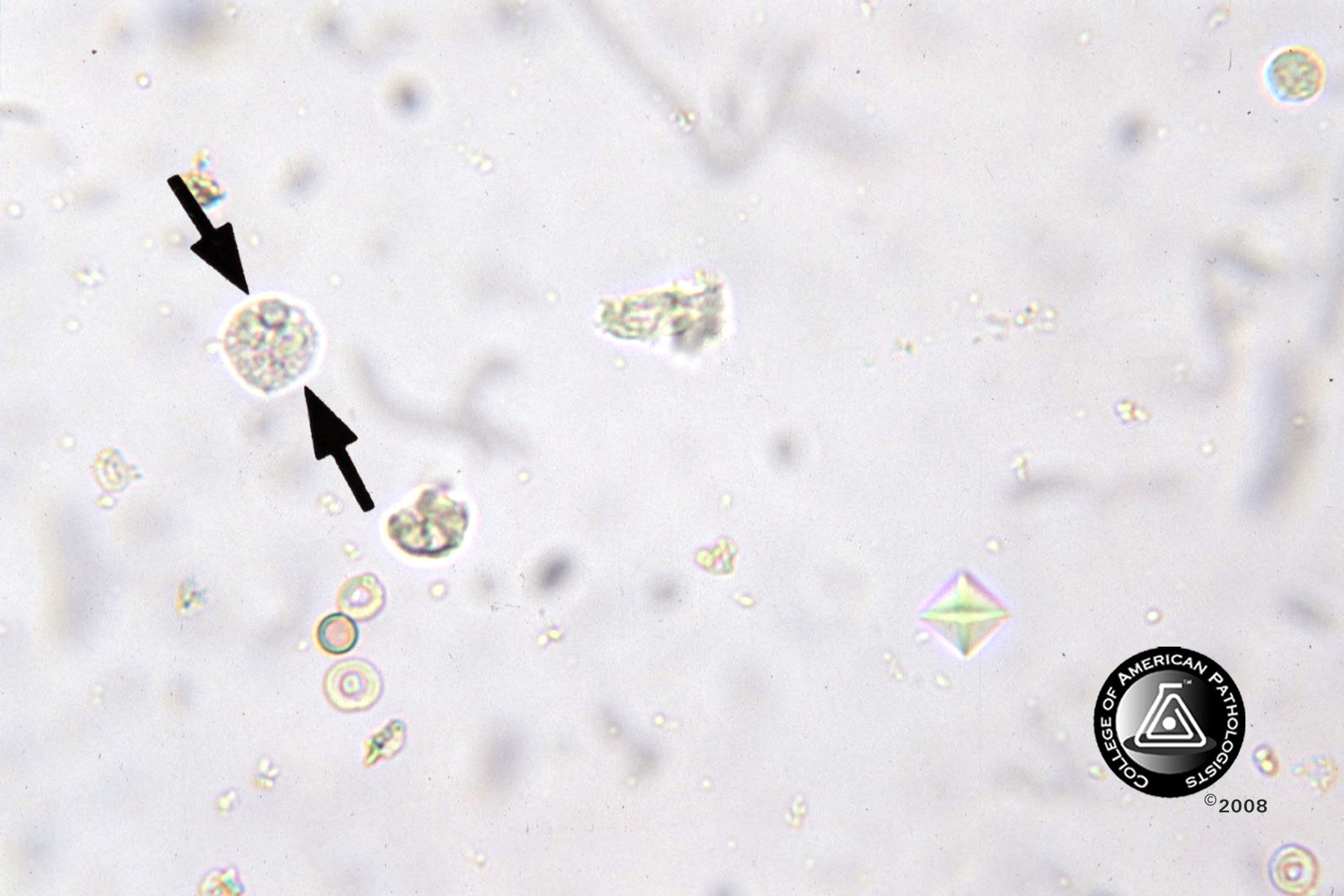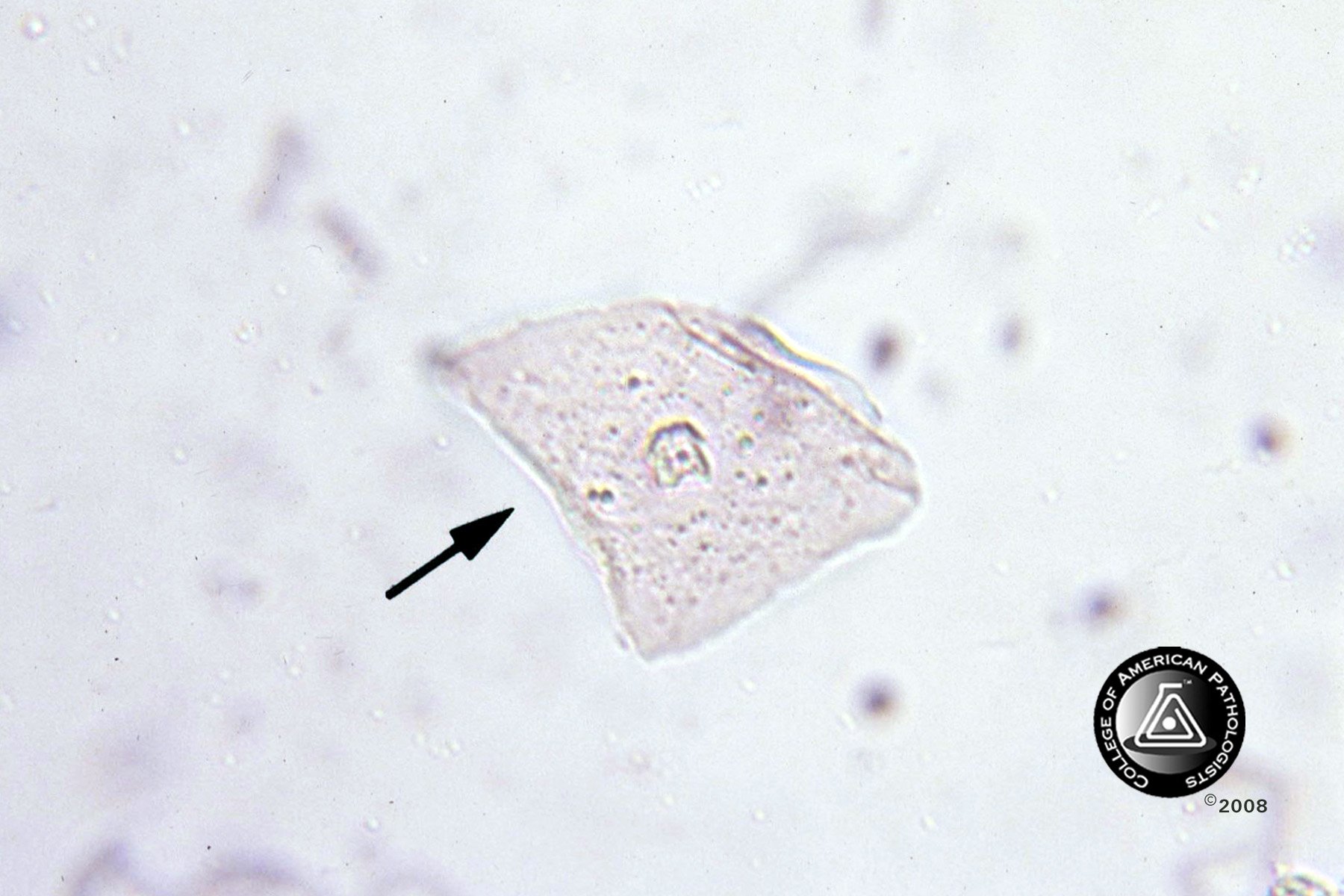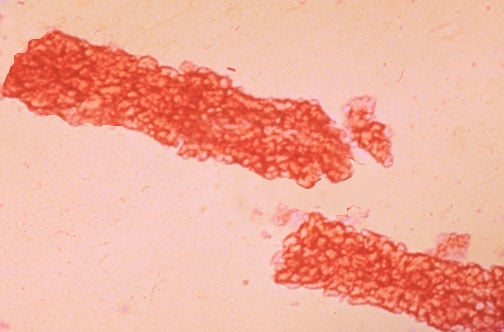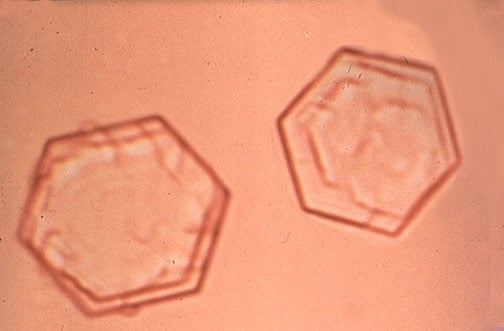Urinalysis Competency Assessment 2012
This quiz is designed to be used with clinical laboratory staff to assess their competency in Urinalysis. It will be used, in conjunction with observations and check lists, to satisfy regulatory requirements.
- 1.
Identify the cast.
- A.
Waxy Cast
- B.
Hyaline Cast
- C.
RBC Cast
- D.
Granular Cast
Correct Answer
B. Hyaline CastExplanation
Hyaline casts are the most common type of casts found in urine. They are composed of protein and are transparent or pale in color. Hyaline casts can be seen in normal urine, but their presence in large numbers may indicate dehydration, strenuous exercise, or certain kidney disorders. They are formed when protein leaks into the urine from the kidney tubules. The presence of hyaline casts in urine can provide valuable information about kidney function and overall health.Rate this question:
-
- 2.
Choose the correct crystal. Urinr pH is 9.0
- A.
Leucine
- B.
Ammonium Biurate (Thorny Apple)
- C.
Triple Phosphate
- D.
Cholesterol
Correct Answer
C. Triple PhosphateExplanation
The correct crystal to choose is Triple Phosphate. A pH of 9.0 indicates alkaline urine, and Triple Phosphate crystals are commonly found in alkaline urine. Leucine, Ammonium Biurate, and Cholesterol crystals are typically associated with other conditions and are not specific to alkaline urine.Rate this question:
-
- 3.
Identify the arrowed object.
- A.
Waxy Cast
- B.
Granular Cast
- C.
RBC Cast
- D.
WBC Cast
Correct Answer
B. Granular CastExplanation
Granular casts are formed when there is degeneration of renal tubular epithelial cells, resulting in the presence of granules within the cast. These granules can be seen under a microscope and are indicative of kidney damage or disease. The arrowed object in the question is a granular cast.Rate this question:
-
- 4.
Choose the correct name.
- A.
Leucine Crystal
- B.
Tyrosine Crystal
- C.
Calcium Oxalate Crystal
- D.
Triple Phosphate Crystal
Correct Answer
C. Calcium Oxalate CrystalExplanation
Calcium oxalate crystals are a common type of crystal found in the urine and can also form in the kidneys or bladder. They are formed when there is an excess of calcium and oxalate in the urine. These crystals can contribute to the formation of kidney stones and can be seen under a microscope in a urine sample. Therefore, the correct name for the given answer is "Calcium Oxalate Crystal".Rate this question:
-
- 5.
Identify the arrowed object.
- A.
Hyaline Cast
- B.
Waxy Cast
- C.
Fiber (exogenous)/fecal contamination
- D.
Parasitic Worm
Correct Answer
C. Fiber (exogenous)/fecal contaminationExplanation
The arrowed object is most likely fiber (exogenous)/fecal contamination. This is because hyaline cast and waxy cast are types of casts found in urine samples, while a parasitic worm would typically have a different appearance. Fiber or fecal contamination can often be seen in samples and can be easily identified under a microscope.Rate this question:
-
- 6.
Identify the objects, regular light (left) and under polarized light (right).
- A.
Starch Granules
- B.
Pollen Granules
- C.
Stain Precipitate
- D.
Fat Droplets
Correct Answer
A. Starch GranulesExplanation
Starch granules can be identified under polarized light because they exhibit a characteristic Maltese cross pattern due to their birefringent properties. This pattern is not visible under regular light. Pollen granules, stain precipitate, and fat droplets do not show this specific pattern under polarized light, making starch granules the correct answer.Rate this question:
-
- 7.
Identify the arrowed objects.
- A.
WBC's
- B.
RBC's
- C.
Renal Tubular Epithelial Cells
- D.
Squamous Epithelial Cells
Correct Answer
B. RBC'sExplanation
The arrowed objects in the given image are RBC's (Red Blood Cells).Rate this question:
-
- 8.
Identify the object
- A.
Fiber/fecal contamination
- B.
Worm (parasites)
- C.
Spermatozoa
Correct Answer
C. SpermatozoaExplanation
The object being identified in this question is spermatozoa. Spermatozoa are the reproductive cells found in males of many animal species, including humans. They are responsible for fertilizing the female egg and initiating the process of reproduction. In the given options, fiber/fecal contamination and worms are unrelated to spermatozoa and do not fit the context of the question. Therefore, the correct answer is spermatozoa.Rate this question:
-
- 9.
Identify the arrowed object.
- A.
Squamous Epithelial Cell
- B.
Leukocyte (WBC)
- C.
RBC
- D.
Starch Granule
Correct Answer
B. Leukocyte (WBC)Explanation
The arrowed object in the image is a leukocyte or white blood cell. Leukocytes are an important part of the immune system and are responsible for fighting off infections and diseases. They can be easily identified by their irregular shape and larger size compared to other blood cells.Rate this question:
-
- 10.
Identify the cast.
- A.
Granular cast
- B.
Hyalin cast
- C.
Leucocyte cast
- D.
RBC's cast
Correct Answer
C. Leucocyte castExplanation
A leucocyte cast refers to the presence of white blood cells in the urine. This can indicate inflammation or infection in the urinary tract or kidneys. The presence of leucocyte casts can help diagnose conditions such as urinary tract infections, pyelonephritis, or glomerulonephritis. The cast is formed when white blood cells clump together and become trapped in the tubules of the kidneys, eventually being excreted in the urine.Rate this question:
-
- 11.
Identify the arrowed object.
- A.
Uric acid crystal
- B.
Glove Starch
- C.
RBC's
Correct Answer
A. Uric acid crystalExplanation
The arrowed object in the image is a uric acid crystal. Uric acid crystals can form in the joints and tissues of individuals with conditions like gout or kidney stones. These crystals are sharp and can cause inflammation and pain. Identifying these crystals in a sample can help diagnose and manage these conditions.Rate this question:
-
- 12.
Identify the arrowed object.
- A.
Renal Tubular Epithelial Cell
- B.
Squamous Epithelial Cell
- C.
Spermatozoa
- D.
Fecal Contamination (Fiber)
Correct Answer
B. Squamous Epithelial CellExplanation
The arrowed object in the image is a squamous epithelial cell. Squamous epithelial cells are flat and thin, resembling scales or fish scales. They are found in the lining of various organs, such as the skin, blood vessels, and respiratory tract. In this case, the squamous epithelial cell is likely from the urinary system, specifically the renal tubules. These cells help with the filtration and reabsorption of substances in the kidneys.Rate this question:
-
- 13.
- A.
RBC's
- B.
Aritfact's
- C.
Yeast cell
- D.
Bacteria (cocci)
Correct Answer
C. Yeast cell -
- 14.
Identify the object.
- A.
WBC Cast
- B.
RTE Cast
- C.
RBC Cast
- D.
Hyaline Cast
Correct Answer
C. RBC CastExplanation
The correct answer is RBC Cast. RBC Cast refers to Red Blood Cell Cast, which is a type of cast found in urine. Casts are cylindrical structures that form in the kidney tubules and are then flushed out with urine. RBC Casts are formed when red blood cells clump together and become trapped in the protein matrix of the cast. The presence of RBC Casts in the urine can indicate various kidney disorders or conditions, such as glomerulonephritis or vasculitis.Rate this question:
-
- 15.
Identify the object.
- A.
Tyrosine Crystal
- B.
Cystine Crystal
- C.
Calcium Oxalate Crystal
- D.
Triple Phosphate Crystal
Correct Answer
B. Cystine CrystalExplanation
A cystine crystal is a type of crystal that forms in the body when there is an excess of the amino acid cystine. These crystals can accumulate in the kidneys and cause kidney stones. They are typically yellow or brown in color and have a distinct shape. Identifying a cystine crystal is important for diagnosing and treating conditions related to cystine buildup in the body.Rate this question:
-
- 16.
- A.
Artifacts
- B.
Yeast
- C.
Bacteria
Correct Answer
C. Bacteria -
Quiz Review Timeline +
Our quizzes are rigorously reviewed, monitored and continuously updated by our expert board to maintain accuracy, relevance, and timeliness.
-
Current Version
-
Mar 22, 2023Quiz Edited by
ProProfs Editorial Team -
Jul 13, 2012Quiz Created by
Eazreen
 Back to top
Back to top



.bmp)


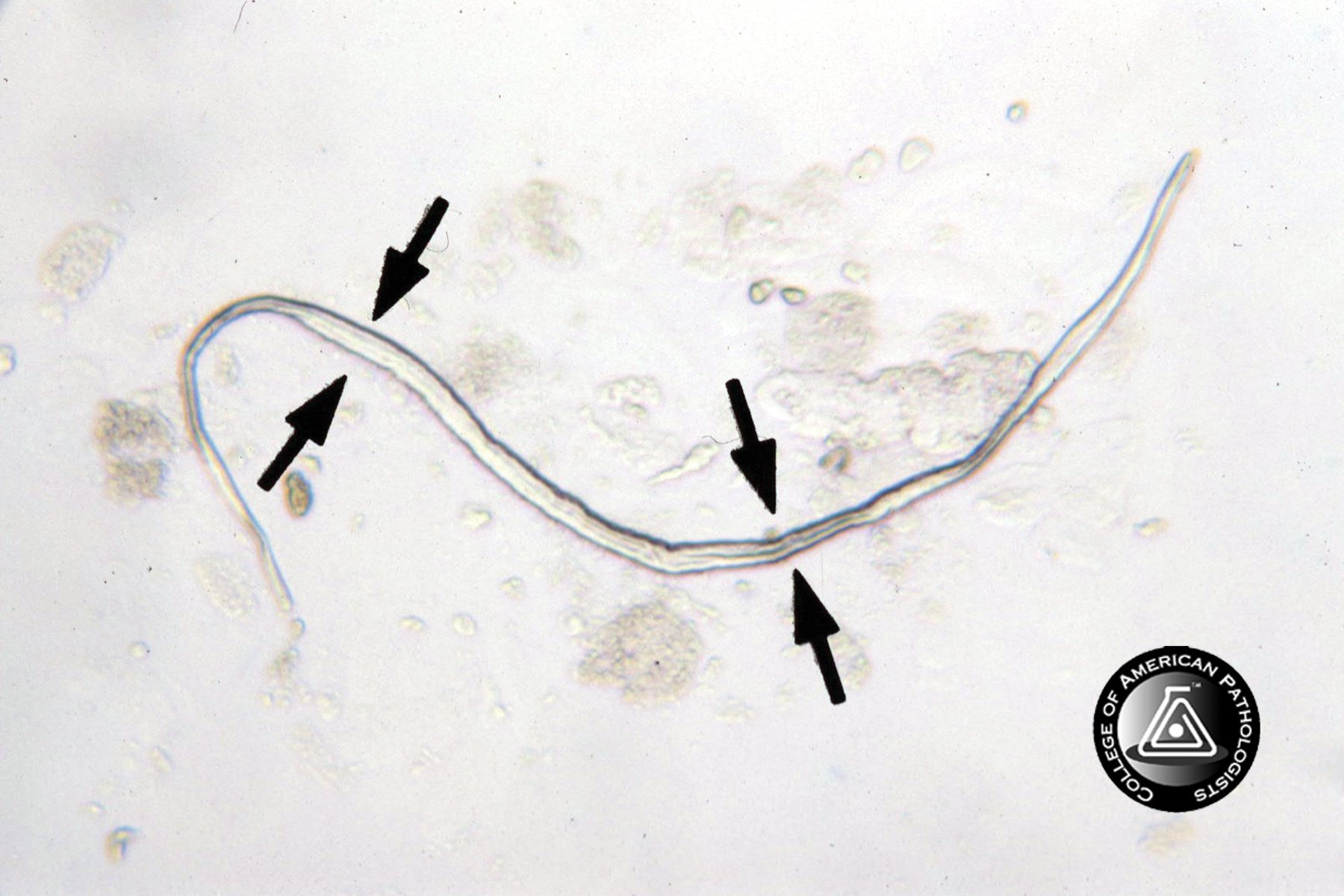
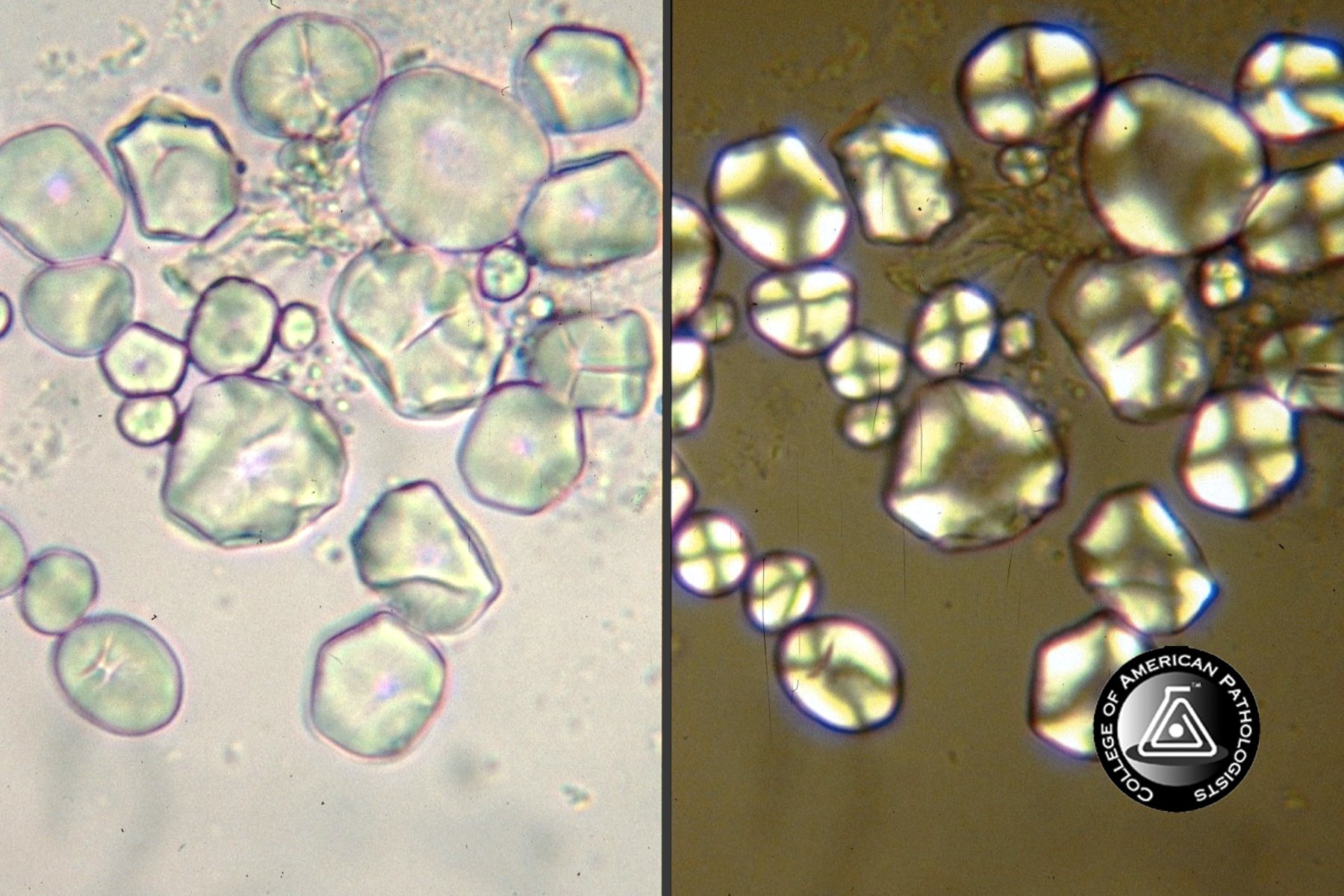
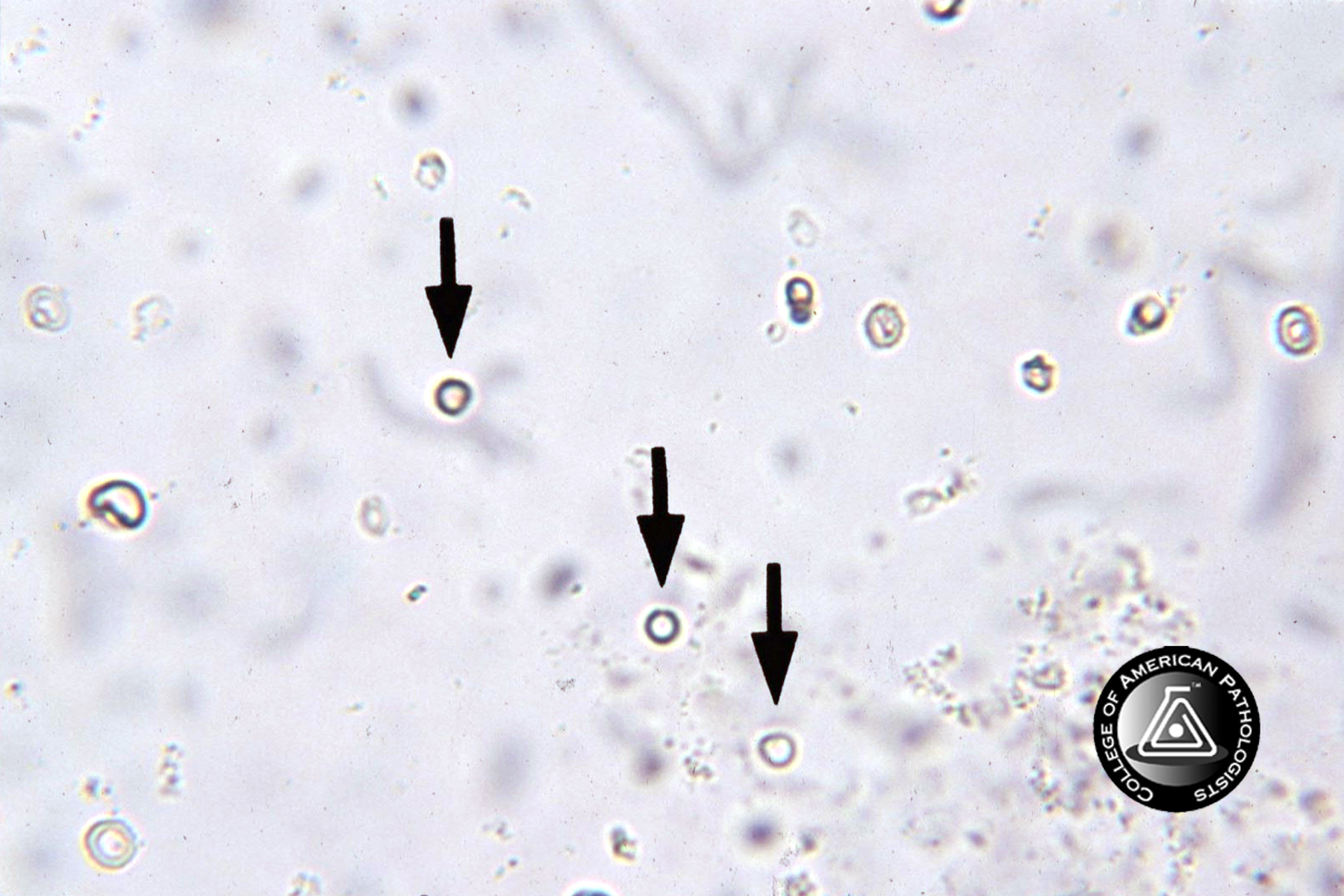
.bmp)
